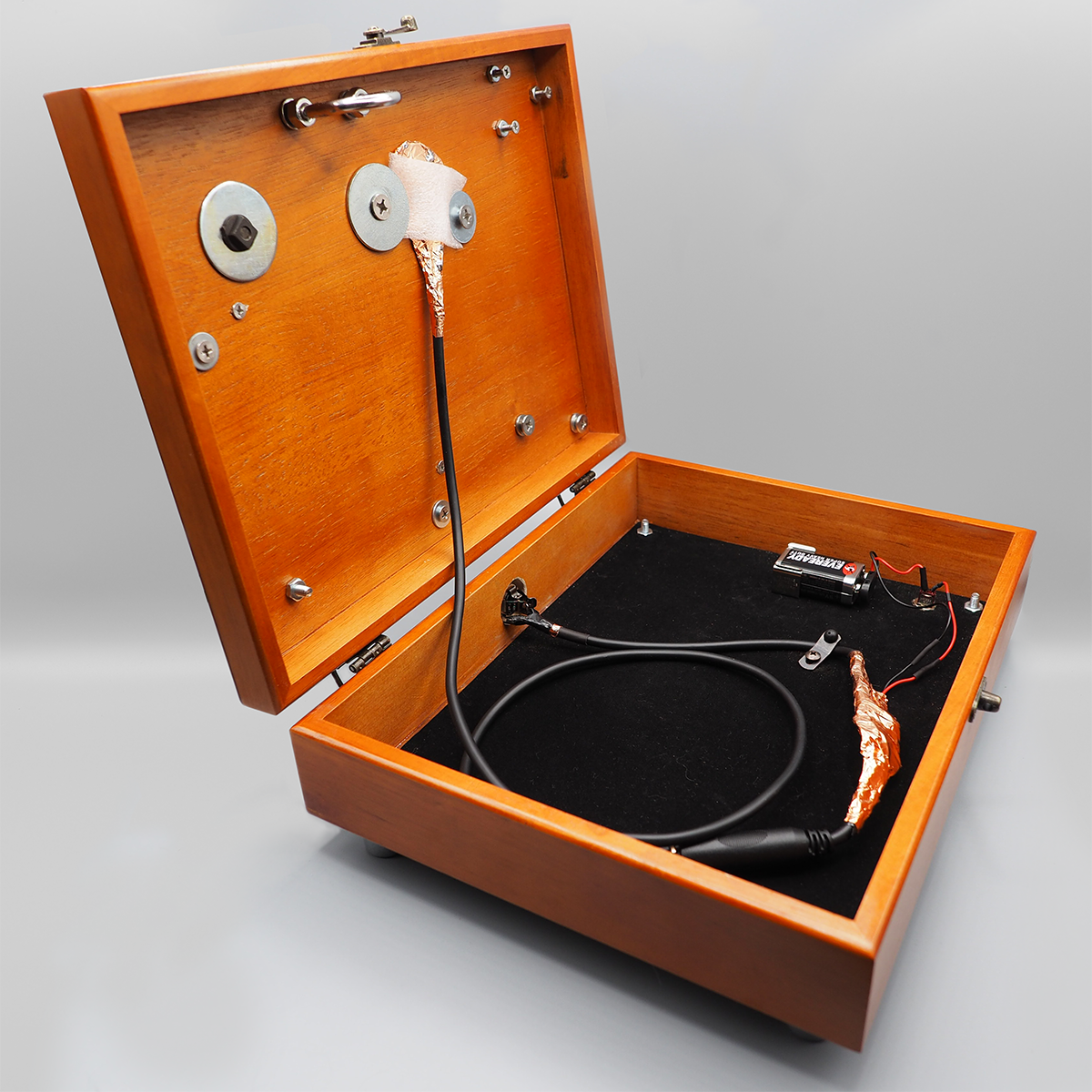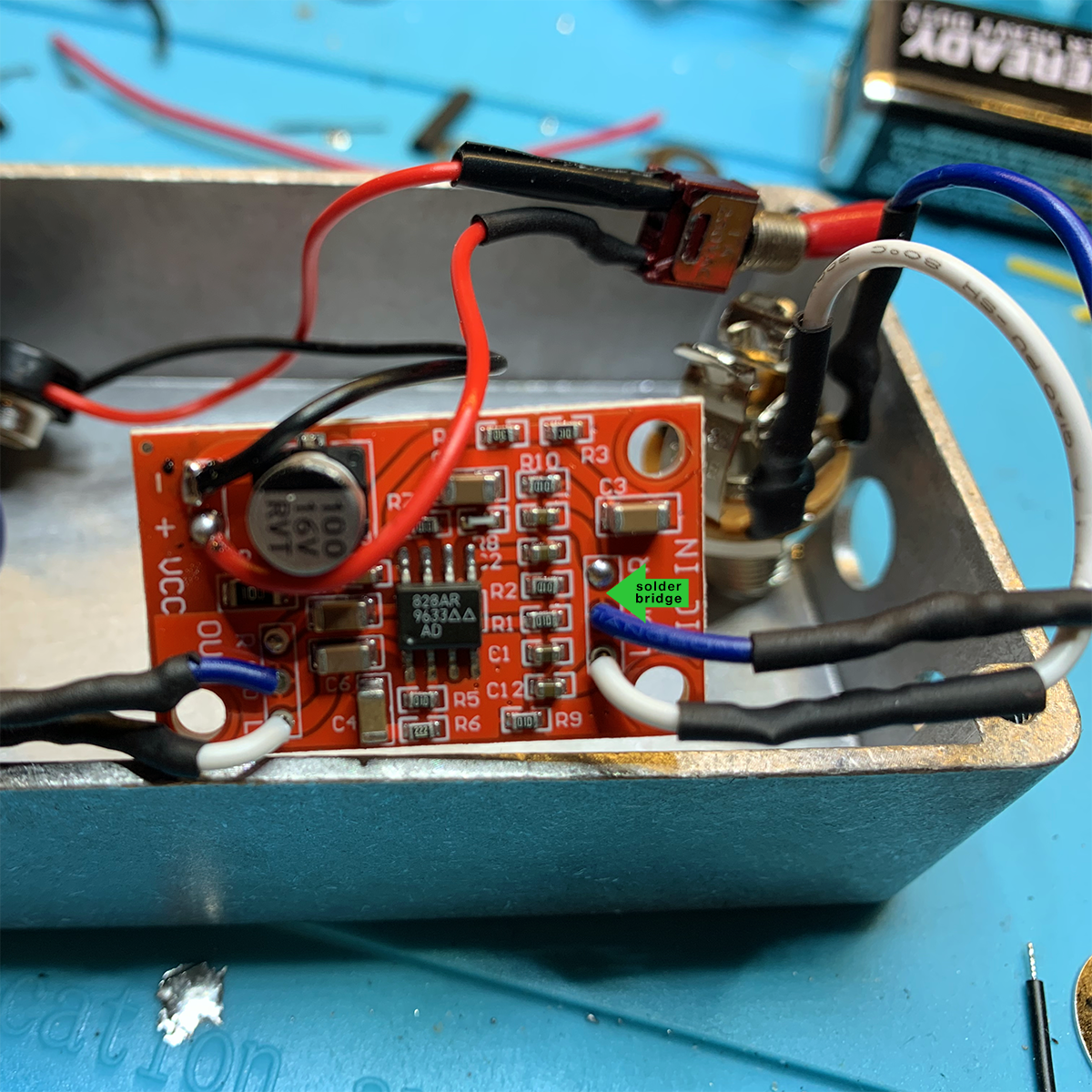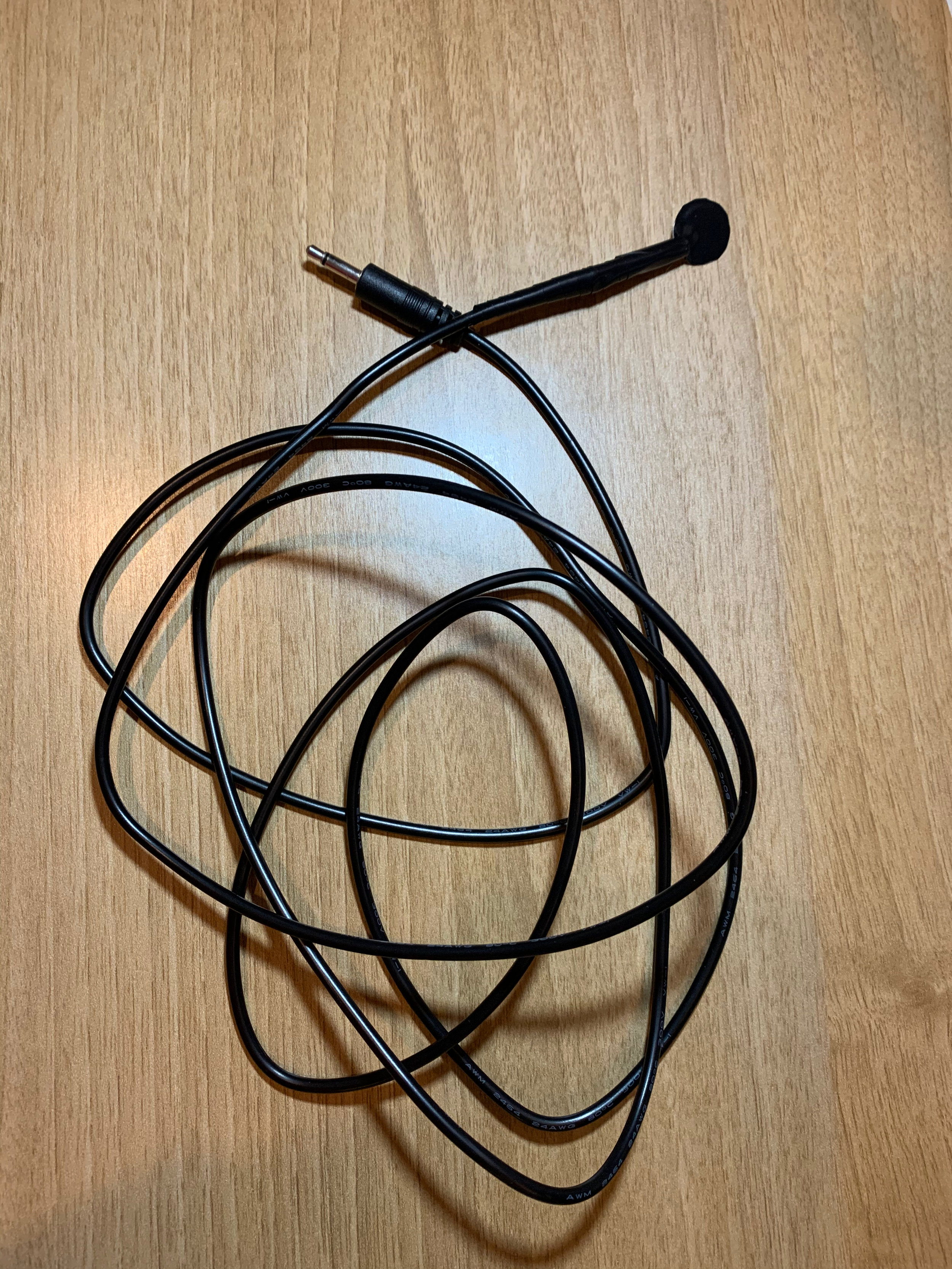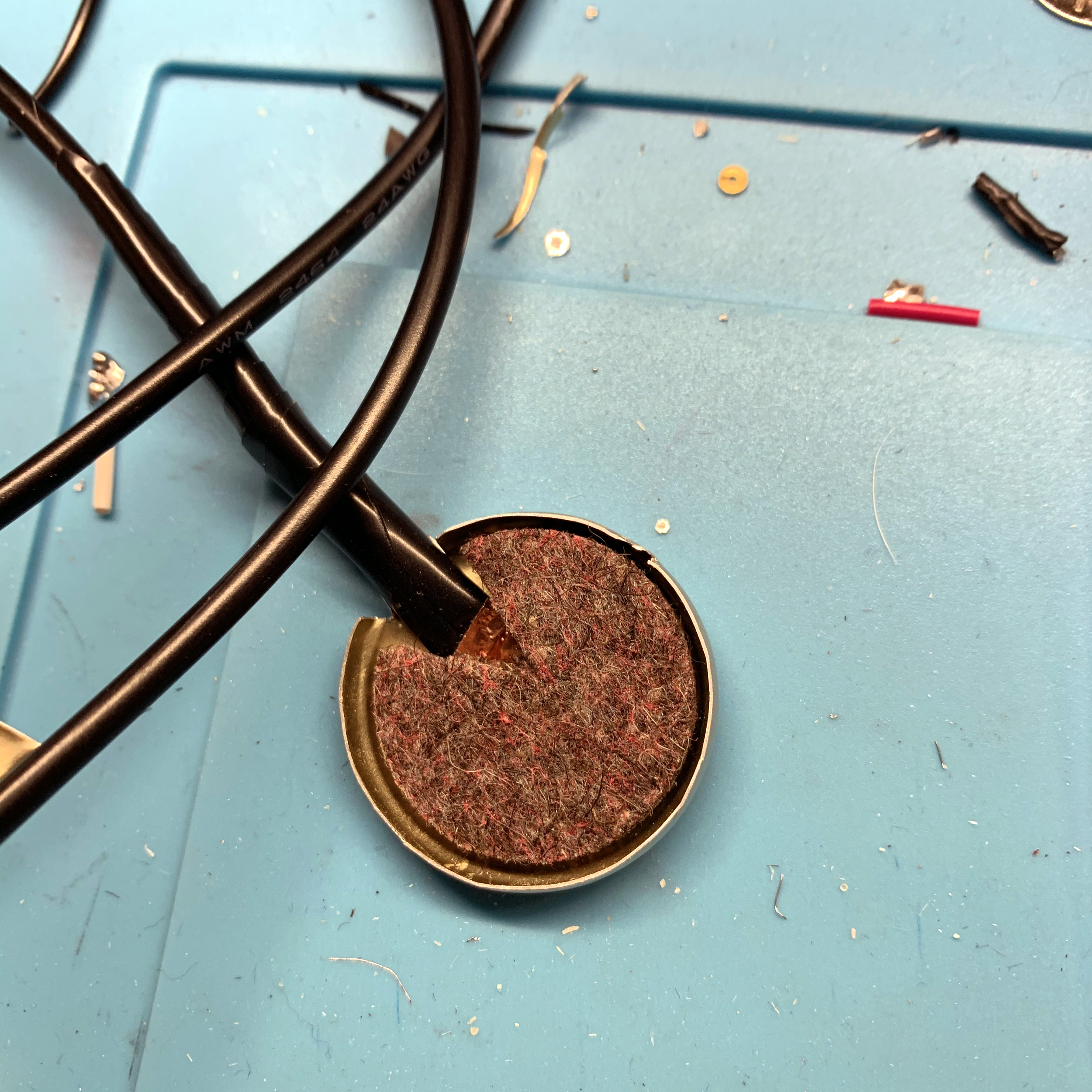Objects as Sound
All sound is vibration
Typical microphones amplify sound waves in the air. Contact microphones work differently. A contact mic consists of a thin brass metal disk with piezoelectric crystals in the center and is able to sense audio vibrations through contact with solid objects. Shout into a contact mic and nothing registers. Place a contact mic on a solid surface — for example, a kitchen whisk and a light breath of air causes the whisk to vibrate and sound like a harp — revealing a hidden and surprising world of sound.
This project is an exploration of contact mics and building experimental “noise box” instruments that illustrate and enhance their range.
“They may look unassuming, but once they’re plugged into an amplifier, piezo discs become psychedelic microscopes for your ears, completely changing your sense of sonic scale . . . Piezo mics don’t just change how I hear things. They change how I see things: Every object is a potential musical instrument. Every object is worth engaging with, however briefly, however loudly, as you seek its potential . . . ”
— David Reese, “Piezo Mics” The New York Times Magazine, July 16, 2019
Sputnik Box: Aluminum, contact mic, preamp and hardware. The metal enclosure produces bright treble and high crisp notes.
Wood Box: MDF, contact mic, preamp and hardware. The combination of wood, MDF and hardware including old clock chimes and gongs and rubber bands produces mellow notes.
Button Shaker Box: aluminum, contact mic and hardware. This hybrid shaker and spring box produces a cascading sound when shaken as well as rasping notes.
Contact Mic: bottle cap and audio cable. This free-form mic tool connects to the Arduino sampler and looper. It will collect sound from most surfaces it's rubbed or held against.
Button Shaker Box connected to modular or floating preamp box. Building a stand-alone preamp box allows for smaller boxes like the Button box to be connected to a preamp -- an important piece of kit that deals with the impedance mismatch between the output of contact mics and the audio inputs of amplifiers and recorders.
Arduino sampler and looper built from a kit by Nootropics and running the Looper Arduino sketch. The case was made from a bamboo box and thin plywood.
Video: the combined effect:
press arrow to play.
How does this work?
The contact mics pick up vibrations from hardware mounted on the boxes that is fed via preamps to a mixer and on to effects, including an Arduino sampler and looper as well as guitar pedal effects, and out to the audio input on a guitar amp where they can be heard.
This design allows for these instruments to be played live or recorded. The instruments can be bowed with a violin bow, plucked or struck. The following diagram shows how this works:
Construction
Working with piezo poses a number of challenges. Soldering a piezo mic together is straightforward, but impedance matching of the resulting audio signal with audio inputs on guitar amps and audio recorders requires assembling a preamp. Without a preamp, a piezo mic loses its bass and much of its treble range and the results are tinny.
Piezo mics are also prone to electromagnetic interference (EMI) so it’s important to shield them as well as the homemade preamps so as to reduce unwanted noise.
Another challenge is that while in principle all objects have potential for interesting sounds, not all are interesting—though this is subjective. There lies some of the fun — exploring what surfaces and objects produce the most interesting sounds.
Another challenge is in choosing mounting hardware and enclosures that brings out the full sonic potential off these objects and then matching those with objects, like bows and other strikers, that bring out their sounds.
On their own, the sound these objects make is interesting, but effects like guitar pedals and the Arduino sampler and looper bring out a fuller richer experience. This was a challenge as there are hundreds of guitar pedals and translating what might sound good for an electric guitar to what might sound great for a piezo “noise box” took some research. I expect that this will continue to be a process of exploration.
Parts & Materials
(2) 41mm piezo discs
(1) 15mm piezo disc
(3) Acxico AD828 Stereo Dynamic Microphone Preamp Modules
(3) 9 volt batteries
(1) CTACT piezo preamp
Arduino Uno
Audio Hacker Shield (Nootropic) running Arduino Looper sketch
DJ Shield (Nootropic)
Fender Frontman 10G 10 watt amplifier
(2) 3.5mm female to 1/4” male plug adapters
3.5mm aux cable or black and red 22 guage stranded wire
(5) 1/4” audio jack
1/4” male male guitar cables and patch cables - count varies based on how many effects are in the chain from noise box to amp
project box - one wood (MDF) and two aluminum
parts that are resonant, including bass guitar strings, springs, rubber bands, head massager, music box mechanisms, clock gongs and chime blocks.
metal hardware - bolts, washers, nuts, cap nuts to mount resonating parts to boxes
guitar fx pedals in this order: feedback, distortion, delay, two reverbs plus 1/4” male male patch cables and power adapters for these.
FIFINE 4 channel mini audio mixer
Tools: soldering iron, solder, drill, drill bits, titanium step drill bit for metal, hot glue gun, screwdrivers and pliers. Also useful: Dremel tool and oscillating tool and tabletop vise.
Appendix
What a whisk sounds like when it is blown on while connected to a contact mic.


































